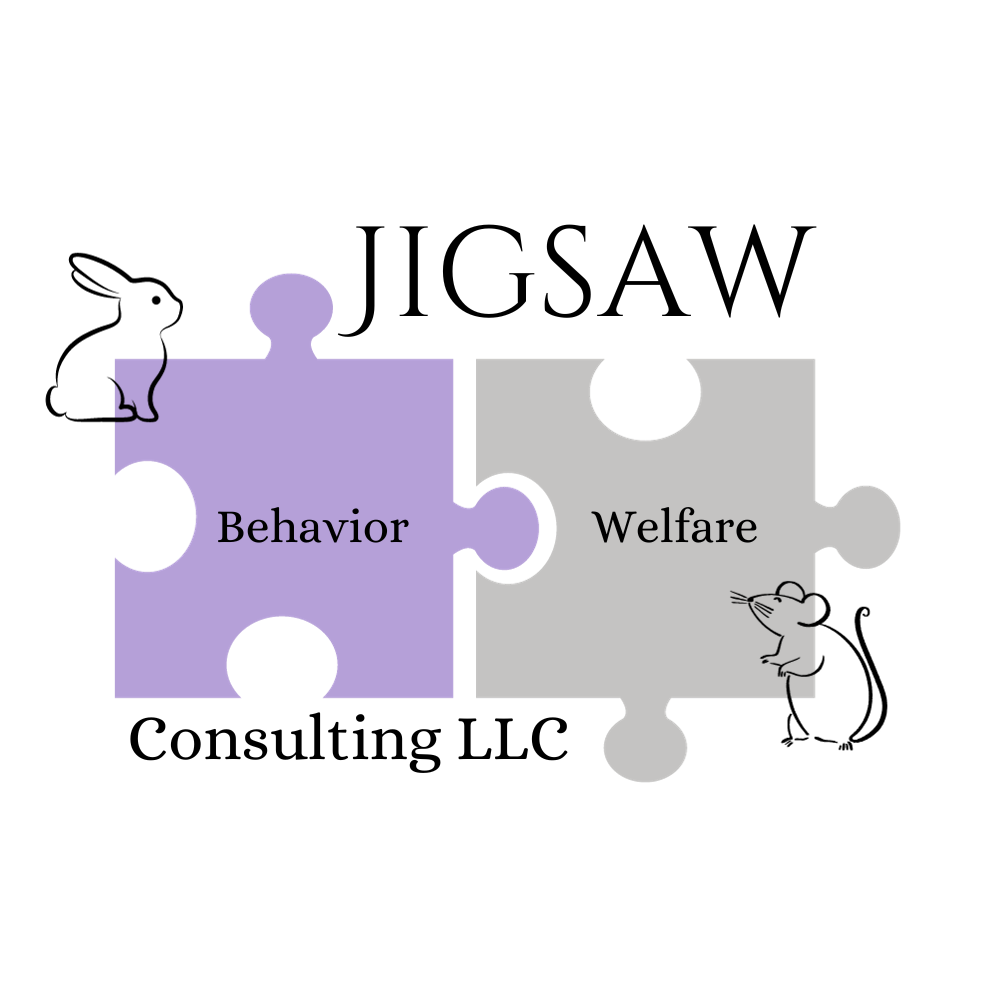IN THIS LESSON
All training ends in a consequence
Shouldn’t we start with A? No, We are going to go backward and start with C because consequences are one of the most important parts of learning a behavior. There are four basic consequences in learning. They either increase your behavior or decrease your behavior, using different strategies.
Positive Reinforcement: In order to increase a behavior, you will add in a desirable consequence.
E.g. Whenever a zebra steps up on a weight scale, the trainer gives them a treat and the behavior continues.
Negative Reinforcement: In order to increase a behavior, you will subtract an aversive consequence.
E.g. When training lab rats to move cages, the trainer tilts the cages together. When the rats move to the next cage, the tilt stops, so the behavior continues.
Positive Punishment: In order to decrease a behavior, you will add in an aversive consequence.
E.g. A cat scratches on the couch, so the pet parent sprays them with water to make the behavior stop.
Negative Punishment: In order to decrease a behavior, you will subtract a desirable consequence.
E.g. A dog jumps on people as they walk through the door. Instead of allowing people to pet the dog, you ask them to turn away instead. The dog stops jumping on people in order to resume getting pets.
Which method is best?
While we tend to use a mix of different methods while training, positive reinforcement should be the default. It is a rewarding experience for the animal and helps strengthen the bond between them and the trainer. Positive reinforcement also builds the motivation to train. Think about yourself at work. If you make a mistake at work and your boss reprimands you every time you do anything, why would you want to even try to do your job anymore? It’s frustrating, stressful, and make you resent and sometimes fear your boss. However, if your boss recognizes and praises you for the good work you’ve done, you’re more likely to be motivated to continue doing your job. This works just the same with non-human animals.
But what if I want to decrease a behavior?
You can still use positive reinforcement to decrease a behavior. The way this works is that you instead reward them for performing an alternative behavior. For example, if you want your dog to stop jumping on people as they walk through the door, train an incompatible behavior instead, like having to stand with all four paws on a mat to receive a reward.
I used positive punishment. Am I going to ruin all our training?
We all make mistakes and sometimes we resort to methods we don’t want to use. In an emergency situation, for example, it is very difficult to refrain from using positive punishment. If your dog runs out into the street and a car is coming, you’re not going to stand there and cue them to recall over and over again. Your instincts are going to kick in and you are going to run out and grab your dog and drag them back to safety. You should always do your best to stick with positive reinforcement, but don’t beat yourself up if you accidentally slip-up. Make sure to keep treating your animal with respect and care to keep your bond healthy and strong.

